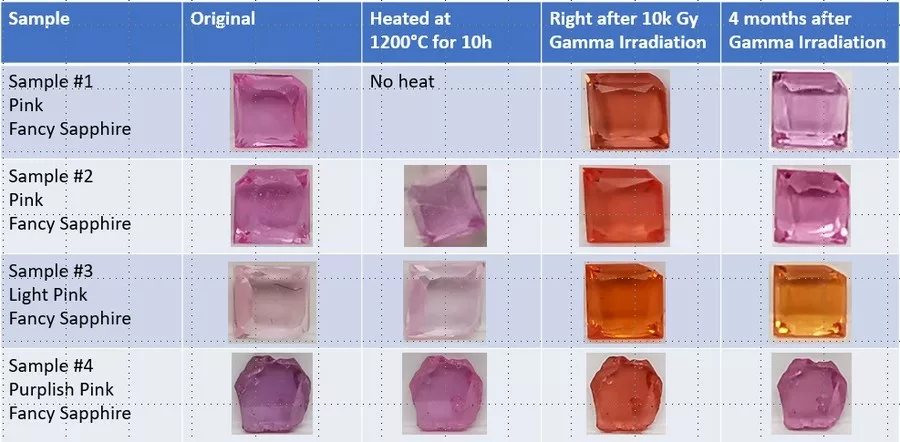Low-temperature heating of corundum: possibilities and challenges for detection
Heat treatment is generally applied to gemstones to change and enhance their colour. Over the past few decades, it has become a very common practice for certain gem species, such as aquamarine, amethyst (resulting in citrine), copper-bearing tourmalines (Paraiba), tanzanite, and notably for any colour variety o
Effects of gamma irradiation on ruby and pink sapphire: an update
Gamma irradiation is a treatment method that may enhance the colour and visual appearance of gemstones, such as diamond, topaz, quartz, and corundum, to name a few. This treatment method uses strong gamma rays, either from radioactive isotopes like cobalt-60 (60Co) or from a linear accelerator (LINAC), to induc
Bachelor thesis on fissure filling substances in emeralds
Fissures in emeralds are commonly filled with colourless substances such as oil, wax, or artificial resin to modify and enhance their clarity. This treatment is not new and has been known for many centuries, specifically with oil.
A descriptive study on as-grown and HPHT-treated CVD synthetic diamonds
The Swiss Gemmological Institute is testing more than one million colourless melee diamonds for the Swiss watch and jewellery industry on an annual basis to guarantee that no synthetic diamonds are mixed within natural melee diamond batches.
Dehydration of Diaspore and Goethite during Low-Temperature Heating as Criterion to Separate Unheated from Heated Rubies and Sapphires
Dehydration of Diaspore and Goethite during Low-Tempera […]
Effects of Gamma Irradiation on Ruby and Pink Sapphire and Potential Detection Methods in Gem Labs
Keywords: Ruby, Pink sapphire, Gamma irradiation, UV-VIS, Raman, R-Line
Irradiation Treatment in Rubies and other Corundum Varieties: Update about Ongoing Research at SSEF on this Issue
Irradiation of corundum varieties to change and enhance their colour is known since many decades but remains a difficult and challenging issue until today, as no gemmological method is currently known which would allow an unambiguous detection of this type of treatment.
At the frontier of research: irradiation experiments on corundum
As is known in the gem trade, the colour of certain gems may be caused or influenced by the presence of colour centres (a type of defect in the crystal structure that can absorb light and thus result in colour, that can be present both in stable or unstable form).
Heated spinel from Tajikistan
The spinels were nearly free of any inclusions except for a few tiny colourless forsterite inclusions. In combination with trace element analyses, the origin of these spinels could be unambiguously attributed to the famous spinel mines near Kuh-i-Lal, located in the Pamir mountains in southern Tajikistan, close








